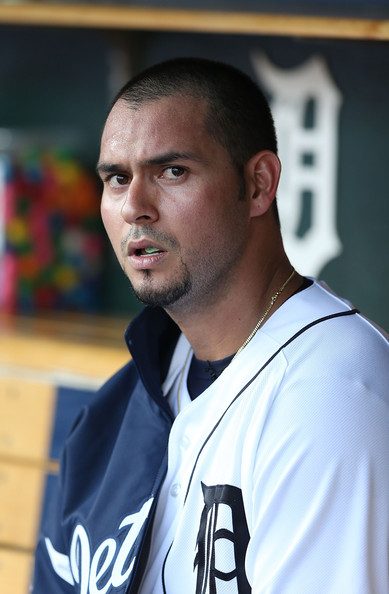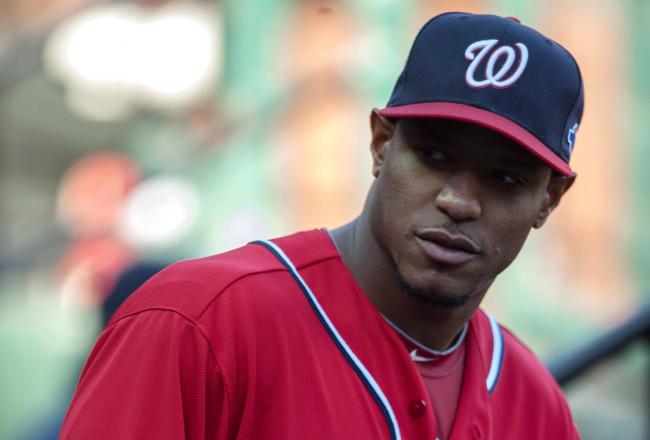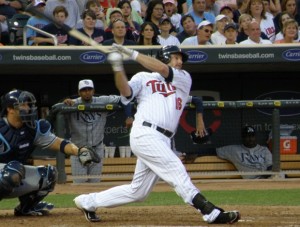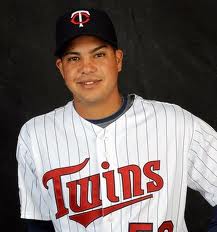I’ve never been in favor of giving long-term contracts to pitchers. I thought the Mets would regret giving Johan Santana five years at the salary levels they paid him. I have never advocated that the Twins should get involved in a bidding war for a Cliff Lee or a Roy Halladay or any other pitcher that was obviously going to get 5+ years at a bazillion dollars per year from one of the mega-market teams.
It just doesn’t make sense, does it? Pitchers are so fragile. It just seems like there’s a better than 50-50 chance that any given Major League starting pitcher is going to blow out an elbow, shoulder, knee or other appendage that is pretty important for a pitcher to be effective. With that being the case, it seems like any team signing a pitcher to a four or five year contract should almost assume that they’re going to be paying that pitcher NOT to pitch for them for at least one of those seasons.
Not a lot a lot of teams can afford to pay 10, 15 or 20 million dollars in any given season for a pitcher that never takes the mound. Sure the Yankees can absorb that kind of nonproductive payroll and the Dodgers are certainly headed in to the same category. Even the Red Sox and Phillies can probably deal with that kind of hit from time to time. But a team run on a tight budget like the Twins just can’t afford to take that kind of risk. Right?
No, they can’t… usually.
But these are not usual times in Twinsville and, as hard to believe as it may seem on the surface, right now the Twins actually can afford to take that kind of risk. In fact, I’d argue they almost can’t afford not to do so.
While it may be counter-intuitive for Twins fans who have been programmed by the Twins front office to believe spending any kind of serious money over a period of more than a couple of years, especially for a pitcher, would lead to the financial collapse of the entire Pohlad family, there’s an argument to be made that now is the time to throw caution to the wind and dive in to that free agent pitching market. And I’m just the person to make that argument.
So am I arguing that the Twins should go all out to outbid the Dodgers and Angels for Zack Greinke’s services? No. I haven’t gone quite that mad (though I might argue that it’s not… quite… as absurd an idea as most would claim). I’m also not sure I’d roll the dice on Dan Haren’s iffy back for more than a two year guaranteed contract.
But let’s talk seriously about Anibal Sanchez and Edwin Jackson (and maybe even Joe Saunders) for a moment.

The Twins Daily guys, in their “2013 Offseason Handbook,” estimate that Sanchez and Jackson should command multi-year deals of about $11 million per year. They project Sanchez to get four years and Jackson to get three. They project Saunders to get three years at $8 million per year.
I’ll say right up front that I don’t believe the Twins can sign any of those three pitchers for those figures. It will take more. First, because with the early deals we’re seeing for Baker, Guthrie, Kuroda (and perhaps others I’m forgetting) it’s apparent that pitchers are getting bigger bucks than the authors of the Handbook (and most of the rest of us) expected teams to shell out. But more importantly, each of these pitchers are going to get offers from teams who did not lose 95 games in 2012 and, all things being equal, they’ll sign with a team that’s been having some level success recently. So if the Twins want any of these guys, they’ll need to make sure all things are not equal.
The way they can do that is to offer a longer term contract than other teams are willing to offer. If other teams will offer three years, the Twins need to offer four. If others will offer four guaranteed years, the Twins need to offer five.
And there are two big reasons why Terry Ryan should do exactly that.

The first is that the Twins really… really… need good starting pitching. They need it now. They’re also going to need it in 2014 and they’re still going to need it in 2015 and 2016. Maybe Kyle Gibson will develop in to a solid #3 starter… or even better. Maybe Scott Diamond will do likewise. Heck, maybe even BJ Hermsen will become a reliable member of the rotation during that timeframe. But who else in the Twins organization projects as a reliable member of the rotation by 2016? Maybe JO Berrios. Maybe.
Even if you believe any attempt to try to compete for a postseason spot in 2013 and 2014 is fantasy, you have to admit that there is precious little evidence that the Twins will have even an average rotation in place by the time Miguel Sano, Byron Buxton and Eddie Rosario are roaming Target Field on a daily basis. If you believe that, by 2015, these young studs are going to be ready to usher in the next era of winning Twins baseball, don’t you think they’re going to need some pitching just as badly as Joe Mauer, Justin Morneau and Josh Willingham do?
Signing 29 year-olds Jackson and/or Sanchez to long term contracts means they should still be well within their primes in 2015 and 2016.
I know what you’re thinking, though. What if they get hurt? What if one (or both) of them can’t pitch in 2015 or 2016? How can the Twins afford to shell out $11-$22 million for pitchers that can’t pitch? They can’t afford that risk…. can they?
I’m glad you asked. Yes… yes they can. And I’m not just saying that because the Pohlads can technically afford 10 times that much risk without breaking a sweat. Through a very unique set of circumstances, the Twins can actually afford the risk of having over $20 million sitting on the Disabled List all year long without even threatening to crash through their self-imposed “50% of revenue for payroll” limit.
During 2013 and 2014, the risk is minimal anyway, right? Because it appears nobody thinks the Twins should even be trying to field a real Major League team for the next two seasons. If they’re hurt, so what? But if they’re healthy and effective, maybe… just maybe… the Twins could surprise some folks.
But it’s when 2015 rolls around that things get interesting. Even if Denard Span, Josh Willingham and Justin Morneau aren’t traded before the end of 2014, none of them are likely to be around for Opening Day, 2015. Morneau’s contract expires after 2013 and both Span* and Willingham have deals that end after 2014. Given that information, how many of the Twins’ non-pitchers do you think will even be eligible for arbitration in 2015?
*Technically, the Twins hold a 2015 option on Span for $9 million. If you think he’ll still be with the Twins at that point and that the Twins will exercise that option, that’s fine. I think it’s unlikely, especially given all the outfield talent in the pipeline.
Maybe you think Trevor Plouffe and/or Eduardo Escobar will still be around, but I wouldn’t count on it. Maybe Ben Revere will be in his arbitration years… assuming some combination of Hicks, Benson, Arcia, Rosario, Buxton and Kepler haven’t made Ben’s presence unnecessary. If Revere, Escobar and Plouffe have poofed, it’s conceivable that the nine starting position players in the Twins 2015 lineup will be paid a total of $27 million (that’s $23 million for Joe Mauer and the Major League minimum of $500,000 for the remaining eight starters). It’s not unreasonable to assume that the four bench players will similarly be minimum wage earners.
It’s possible that Glen Perkins will still be with the Twins in 2015. If so, his contract calls for him to make $3.75 million that season and the Twins hold a $4.5 million option for 2016. Every other remaining pitcher on the Twins current 40-man roster is either likely to have departed via free agency by then or will still be under team control (either pre-arbitration or arbitration-eligible) in 2015. In all likelihood, much of the Twins bullpen will have been replaced with rookies by then. But just to err on the side of caution, let’s assume that the six members of the bullpen not named Perkins are averaging $2 million each. That would mean a total of $15.75 million devoted to the pen in 2015.
Scott Diamond will be in his first arbitration year in 2015. Let’s go crazy and assume he’ll make $5 million because he’s been so awesome in 2013-14. If Kyle Gibson and either Liam Hendriks or BJ Hermsen are holding down two other rotation spots, that’s another million dollars for the two of them, combined.
By my count, we now have 23 players that the Twins will be paying a grand total of… wait for it… $50.75 million. And that’s perhaps being quite generous.
If the Twins are fortunate to have both Jackson and Sanchez under contract for $11 million per year, each, their total payroll in 2015 could still be less than $75 million.
If one or both of those pitchers is injured, the Twins would still have $25 million with which to attempt to replace the injured pitcher(s) and still keep their payroll below their Opening Day 2012 level.
And we haven’t even mentioned the roughly $25 million of additional national TV revenue that every team in Major League Baseball is scheduled to begin receiving in 2014.
How realistic is this? I don’ t know. One would think (or at least hope) that the Twins wouldn’t rely 100% on “kids” in 2015, but when you look at Hicks, Arcia, Benson, Rosario, Sano, Buxton, Santana, Gibson, Vargas, Kepler, Berrios, Hermsen, Harrison, Polanco, Salcedo, Herrmann… and more… aren’t we realistically expecting those players to have arrived by sometime in 2015, even if not by Opening Day?
Might the Twins sign a veteran utility infielder for a couple of million dollars? Sure. Maybe they even talk Jared Burton in to staying for 2-3 million a year. Maybe there are others.
But the point is, by 2015 every player on the current roster making more than a million dollars a year except Joe Mauer and Glen Perkins is likely to be gone. Morneau, Willingham, Span, Doumit, Carroll, Blackburn. That’s something like $42 million of payroll coming off the books by 2015.
I’m not sure there’s ever a good time to give expensive, long-term contracts to even one pitcher, much less more than one. But if there is, I would think it would be when (a) you desperately need good starting pitchers and expect that desperation to last several years, (b) you’ve got a number of highly talented position players (yet almost no can’t-miss pitchers) within a couple of years of their planned MLB arrival dates, and (c) nearly half your current payroll will come off the books by the time those pitchers enter the third year of their new contracts.
Coincidentally, those are the exact circumstances the Twins find themselves in today.
– JC
P.S. If you’d like to check my math, Cot’s Baseball Contracts has a nifty chart of the Twins’ contractual obligations. Just click here.


